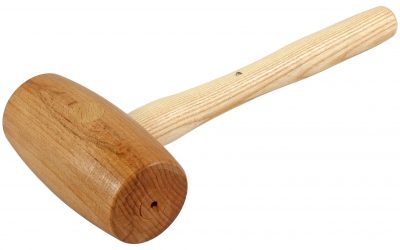Project Report For Mallet
Introduction
Project Report for Mallet is as follows.
The process of making mallets, which are versatile tools used in a variety of industries and applications, is known as mallet production. Mallets are usually made of a strong material, such as wood, rubber, or metal, and have a handle and a striking head. They are commonly used in woodwork, development, automotive repair, manufacturing, and other vocations because they are engineered to give regulated hits.
Material selection is the first step in the production of mallets. Wood mallets are typically made from hardwoods such as beech, hickory, or maple, whilst rubber mallets are made from long-lasting synthetic rubber compounds. Depending on the intended strength and weight, metal mallets are forged or cast from steel or other metals.
The production procedure differs according on the type of mallet after the material is chosen. The selected wood is cut into the necessary size and shape for the handle and head of wooden mallets. After that, the components are shaped, sanded, and assembled with adhesive or mechanical fasteners.

Types Of Mallet
- Wooden Mallets :- In carpentry, wooden mallets are typically used to knock wooden components together, as well as to drive dowels, chisels, and apply pressure to joints. A hardwood mallet, unlike most metal hammers, will not distort the striking end of a metal tool. It is also used to lessen the force applied to the cutting edge of a chisel, allowing for greater control. Cricket bats are also knocked in with hardwood mallets.
- Copper, brass, and leaden Mallets :- Copper, brass, and leaden mallets are commonly employed on machinery to deliver force to parts while minimising the risk of damage and sparks. Because these metals are softer than steel, any excessive force deforms the mallet rather than the steel object it is striking.
- Meat Mallets :- Meat mallets are used to tenderise or flatten meat. They are often two-sided and made of wood or metal, with one side flat or with modest bumps and the other with more prominent protrusions. With the introduction of cube steak machines and other electric tenderisers,[citation needed], their use has decreased, but they may still be purchased in cookware stores and in professional use.
- Rawhide Mallets :- which may have rawhide covering a steel head or just be rolled-up rawhide, are used in leatherwork, jewellery, and the assembly of electric motors and sensitive machinery.
- Plastic Mallets :- Plastic mallets made of nylon, polycarbonate, or polystyrene are popular in leatherwork and jewellery making.
- Split Head Mallets :- Split head mallets have interchangeable faces that can be changed to a material suitable for the application.
Get Completely Custom Bankable Project Report
Market Potential Of Mallet
The market for tool hammers worldwide was worth US$ 3.5 Bn in 2021. Between 2022 and 2031, it is predicted to increase at a CAGR of 4.8%.By the end of 2031, it is anticipated that the market for tool hammers would be worth US$5.6 billion.
The market potential for mallet manufacturing in India is significant, with the country being one of the largest markets for construction and sporting goods. The mallet manufacturing industry in India can be segmented into two categories – construction and sporting goods.
The demand for mallets in the construction industry is driven by the need for specialized hammers for various construction activities such as masonry, carpentry, and metalworking. Similarly, the demand for mallets in the sporting goods industry is driven by the need for specialized hammers for sports such as croquet and polo.
The mallet manufacturing industry in India is highly fragmented, with several small and medium-sized manufacturers operating in the market. However, there is still significant room for new players to enter the market and capture a share of the growing demand.
The mallet manufacturing industry in India faces several challenges such as competition from low-cost imports, lack of access to advanced technology, and a fragmented supply chain. However, there are also several opportunities for manufacturers to grow and succeed in the market.
One of the key opportunities is to cater to the demand for high-quality, specialized mallets that are not easily available in the market. Another opportunity is to invest in advanced technology and automation to increase efficiency and reduce costs.

